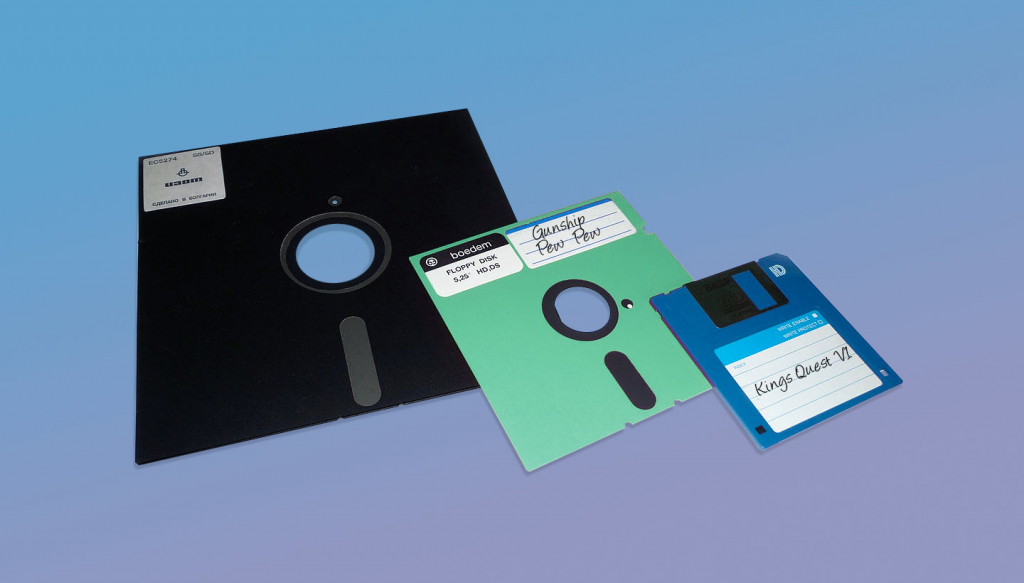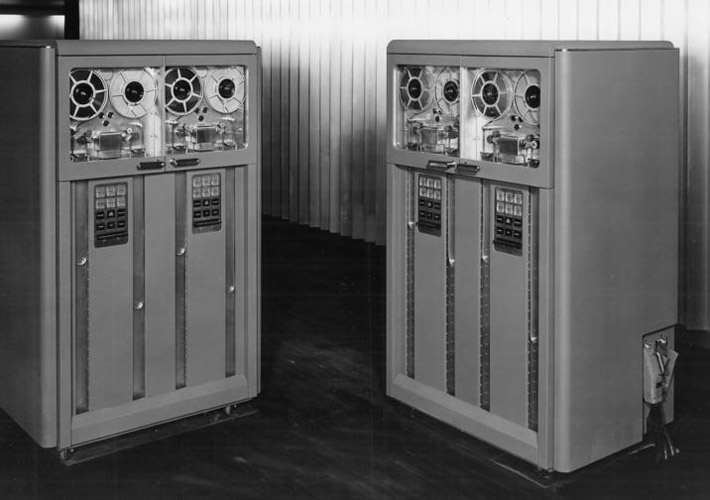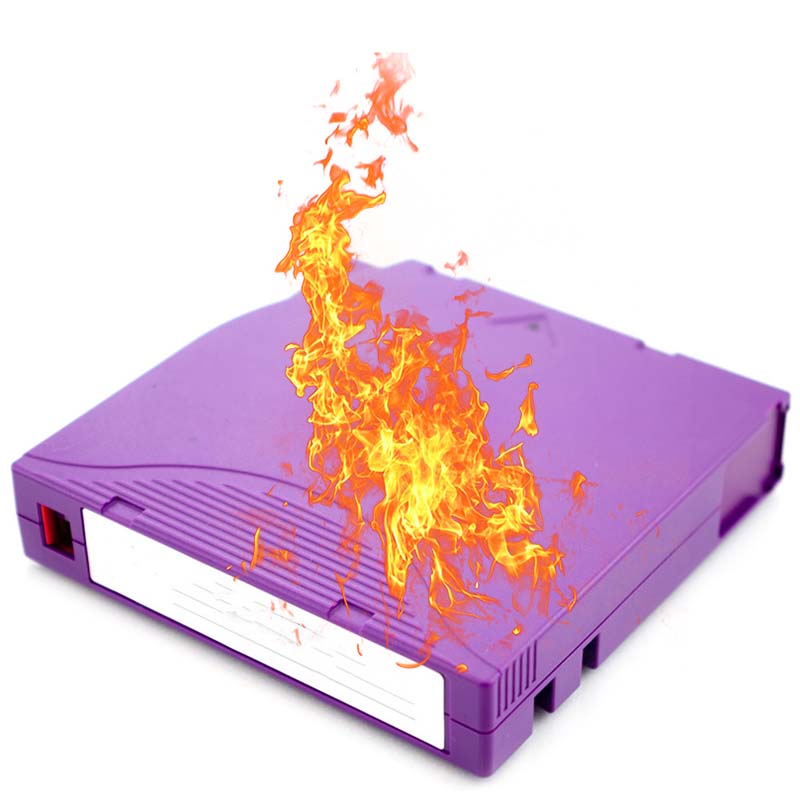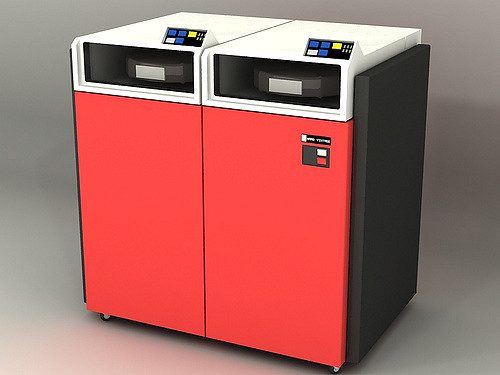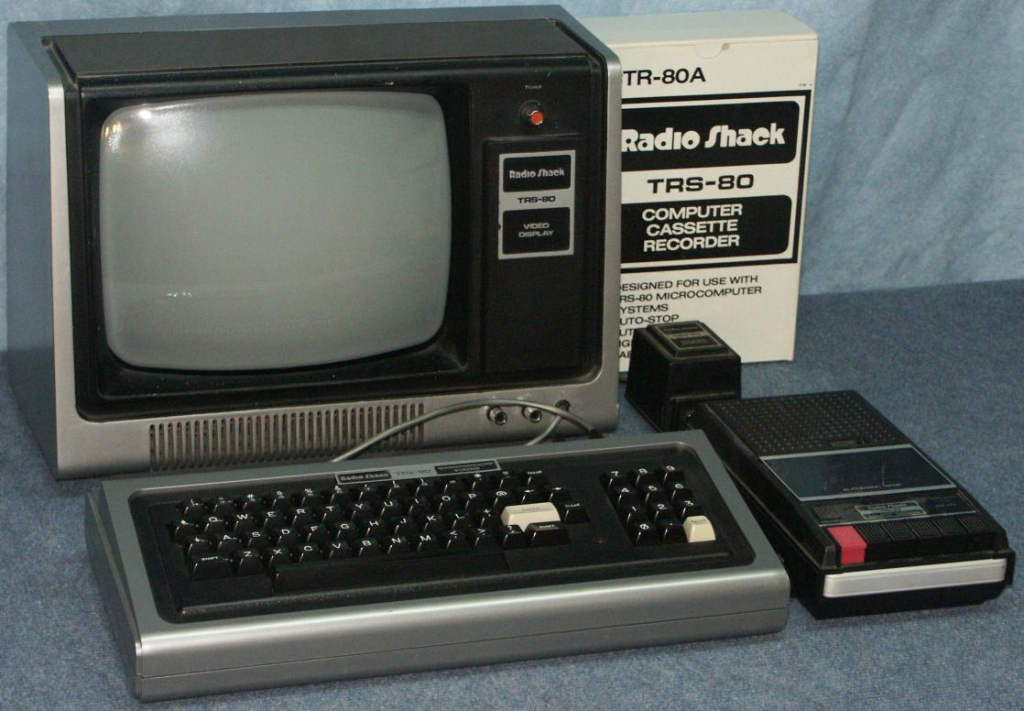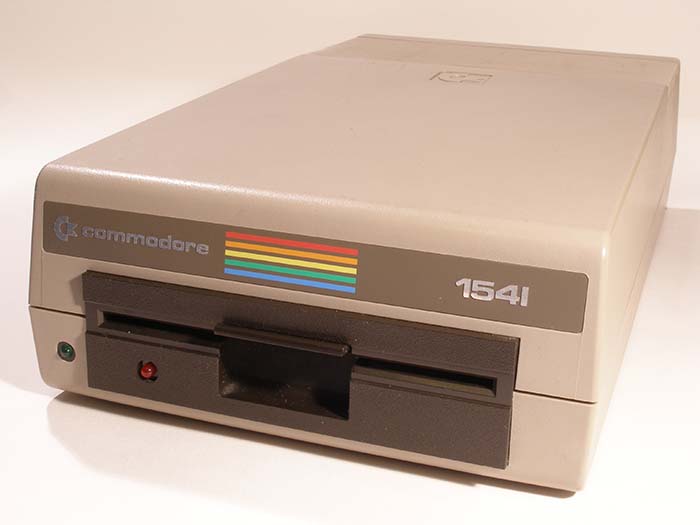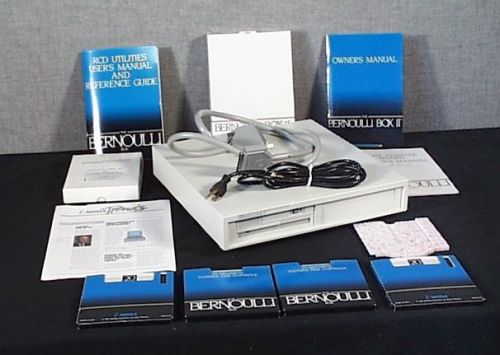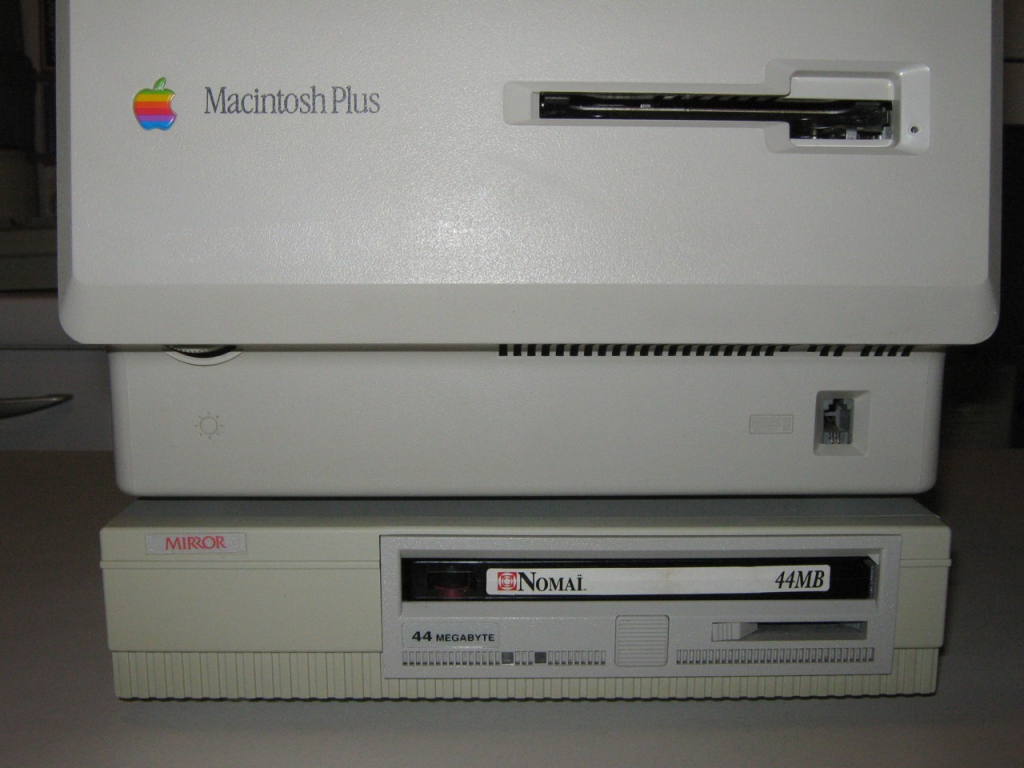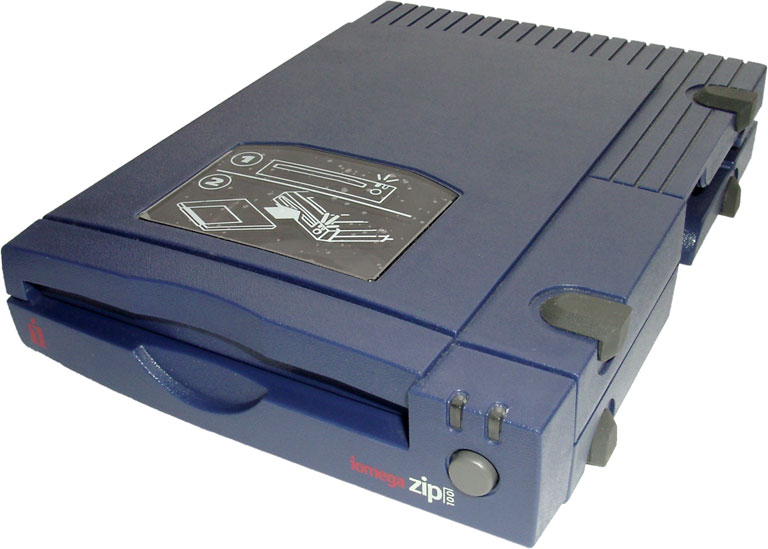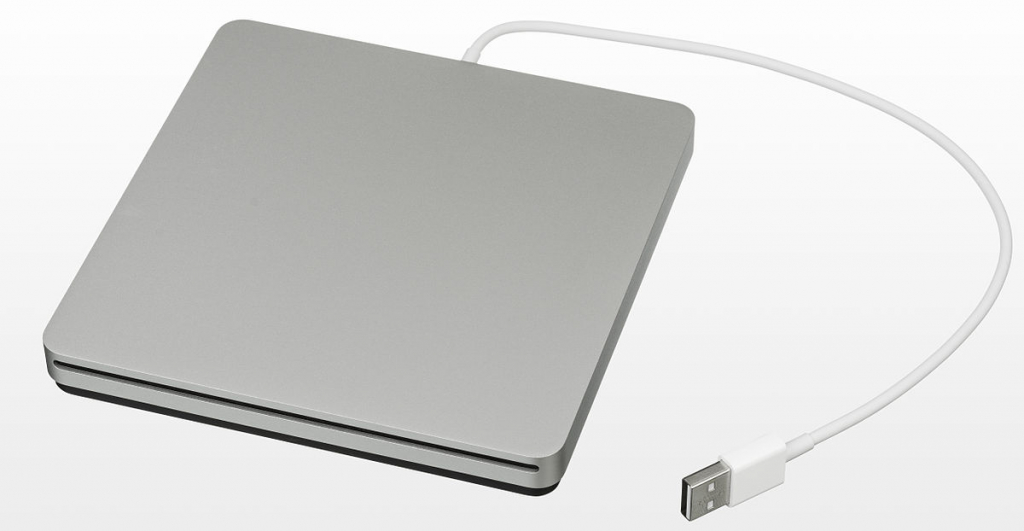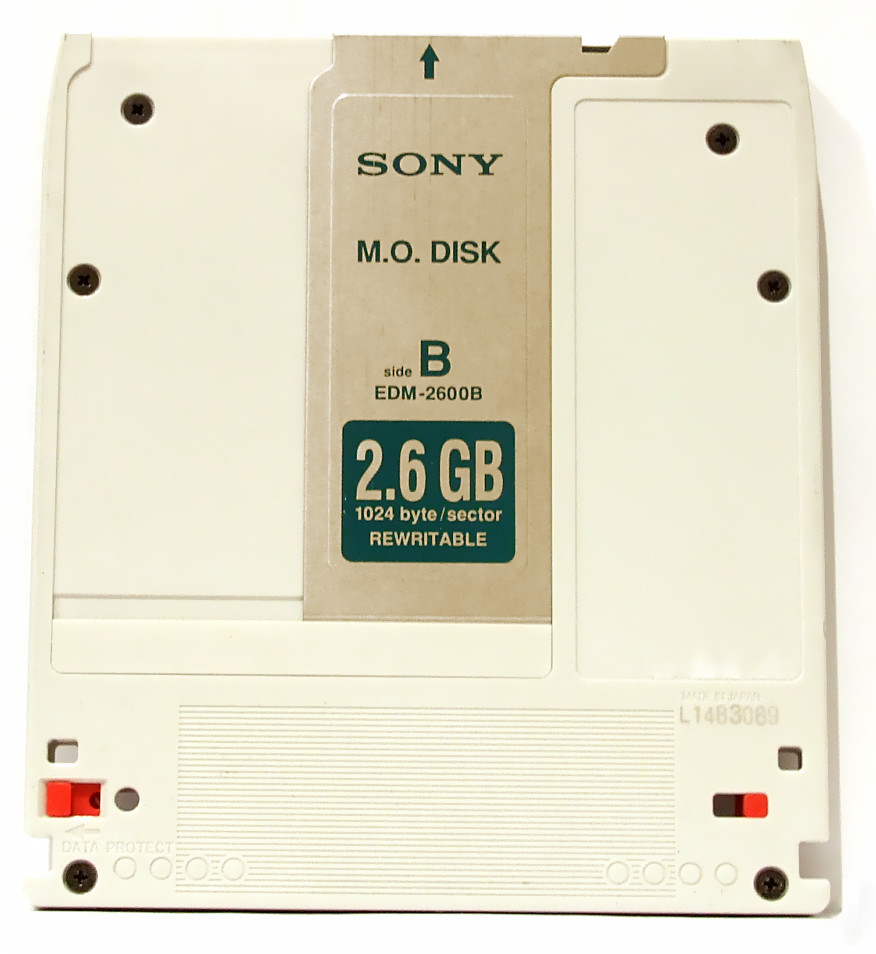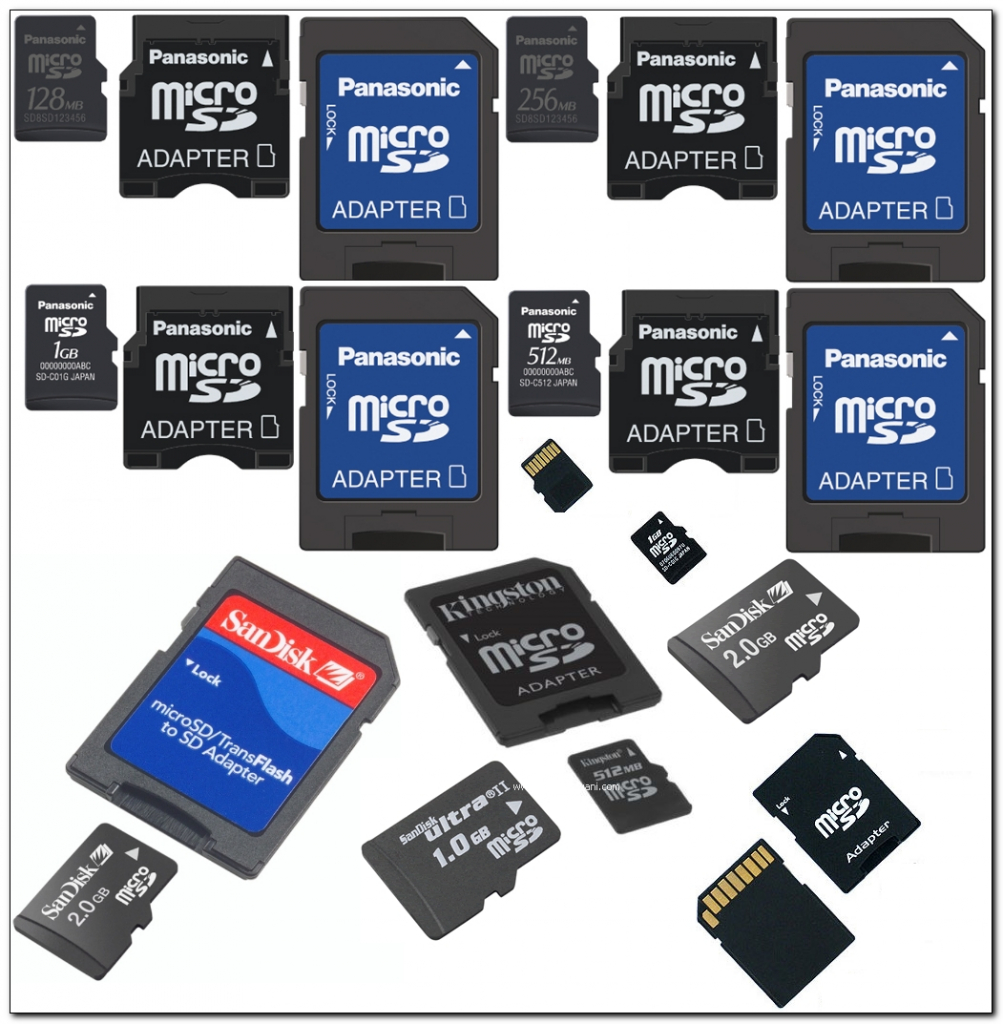Almost from the start, we’ve had a problem with computers: They create and consume more data than we can economically store. Hundreds of companies have been created around the need for more computer storage. These days, if we need space we can turn to cloud services like our own Backblaze B2 Cloud Storage, but it hasn’t always been that way. The history of removable computer storage is like the history of hard drives: A fascinating look into the ever-evolving technology of data storage.
The Birth of Removable Storage
Punch Cards
Before electronic computers existed, there were electrical, mechanical computing devices. Herman Hollerith, a U.S. census worker interested in simplifying the laborious process of tabulating census data, made a device that read information from rectangular cards with holes punched in particular locations to indicate information like marital status and age.
Hollerith’s cards long outlasted him and his machine. With the advent of electronic computers in the 1950s, punch cards became the de facto method of data input. The conventions introduced with punch cards, such as an 80 column width, affected everything from the way we’d make computer monitors to the format of text files for decades.
Open-reel Tapes and Magnetic Cartridges
Magnetic tape drives were standard issue for the mainframes and minicomputers used by businesses and other organizations from the advent of the computer industry in the 1950s up until the 1980s.
Tape drives started out on 10.5 inch reels. A thin metal strip recorded data magnetically. Watch any television program of this era and the scene with a computer will show you a device like this. The nine-track tapes developed by IBM for its computers could store up to 175MB per tape. At the time, that was a tremendous amount of data, suitable for archiving days or weeks’ worth of data. These days, 175MBs might be enough to store a few dozen photos from your smartphone. Times have changed!
Eventually the big reel to reel systems would be replaced with much more portable, easier to use, and higher density magnetic tape cartridges. Mag tapes for data backup found their way into PCs in the 80s and 90s, though they, too, would be replaced by other removable media systems like CD-R burners.
Linear Tape-open (LTO) made its debut in the late 1990s. These digital tape cartridges could store 100GB each, making them ideal for backing up servers and archiving big projects. Since then, capacity has improved to 6TB per tape. There’s still a demand for LTO data archival systems today. However, tape drives are nearing their end of usefulness as better cloud options take over the backup and archival markets. Our own B2 Cloud Storage is rapidly making LTO a thing of the past.
Winchester Drives
Spinning hard disk drives started out as huge refrigerator-sized boxes attached to mainframe computers. As more businesses found uses for computers, the need for storage increased, but allowable floor space did not. IBM’s solution for this problem came in the early 1970s: the IBM 3340, popularly known as a Winchester.
The 3340 sported removable data modules that contained hard drive platters which could store up to 70MB. Instead of having to buy a whole new cabinet, companies leasing equipment from IBM could buy additional data modules to increase their storage capabilities.
From the start, the 3340 was a smashing success. (OK, maybe smashing isn’t the best adjective to use when describing a hard drive, but you get the point.) You could find these and their descendants connected to mainframes and minicomputers in corporate data centers throughout the 1970s and into the 1980s.
The Birth of the PC Brings New Storage Solutions
Cassette Recorder
The 1970s saw another massive evolution of computers with the introduction of first generation personal computers. The first PCs lacked any built-in permanent storage. Hard disk drives were still very expensive. Even floppy disk drives were rare at the time. When you turned the computer off, you’d lose your data, unless you had something to store it on.
The solution that the first PC makers came up with was to use a cassette recorder. Microcassettes exploded in the consumer electronic market as a convenient and inexpensive way for people to record and listen to music and use for voice dictation. At a time that long-distance phone calls were an expensive luxury, it was the original FaceTime for some of us, too: I remember as a preschooler, recording and playing cassettes to stay in touch with my grandparents on the other side of the country.
So using a cassette recorder to store computer data made sense. The devices were already commonplace and relatively inexpensive. Type in a save command, and the computer played tones through a cable connected to the tape drive to differentiate binary 0s and 1s. Type in a load command, and you could play back the tape to read the program into memory. It was very slow. But it was better than nothing.
Floppy Disk
The 1970s saw the rise of the floppy disk, the portable storage format that ultimately reigned supreme for decades. The earliest models of floppy disks were 8 inches in diameter and could hold about 80KB. Eight inch drives were more common in corporate computing, but when floppies came to personal computers, the smaller 5 1/4 inch design caught on like wildfire.
Floppy disks became commonplace alongside the Apples and Commodores of the day. You could squeeze about 120KB onto one of those puppies. Doesn’t sound like a lot, but it was plenty of space for Apple DOS and Lode Runner.
Apple popularized the 3.5 inch size when it introduced the Macintosh in 1984. By the late 1980s the smaller floppy disk size—which would ultimately store 1.44MB per disk—was the dominant removable storage medium of the day. And so it would remain for decades.
The Bernoulli Box
In the early 1980s, a new product called the Bernoulli Box would offer the convenience of removable cartridges like Winchester drives but in a much smaller, more portable format. The Bernoulli Box was an important removable storage device for businesses who had transitioned from expensive mainframes and minicomputers to desktops.
Bernoulli cartridges worked on the same principle as floppies but were larger and in a much more shielded enclosure. The cartridges sported larger capacities than floppy disks, too. You could store 10MB or 20MB instead of the 1.44MB limit on a floppy disk. Capacities would increase over time to 230MB. Bernoulli Boxes and the cartridges were expensive, which kept them in the realm of business storage. Iomega, the Bernoulli Box’s creator, turned its attention to an enormously popular removable storage system you’ll read about later: the Zip drive.
SyQuest Disks
In the 1990s, another removable storage device made its mark in the computer industry. SyQuest developed a removable storage system that used 44MB (and later 88MB) hard disk platters. SyQuest drives were mainstays of creative digital markets—I saw them on almost any I could find a Mac doing graphic design work, desktop publishing, music, or video work.
SyQuest would be a footnote by the late 90s as Zip disks, recordable CDs and other storage media overtook them. Speaking of Zip disks…
The Click of Death
The 1990s were a transitionary period for personal computing (well, when isn’t it, really). Information density was increasing rapidly. We were still years away from USB thumb drives and ubiquitous high-speed Wi-Fi, so “sneakernet”—physically transporting information from one computer to another—was still the preferred way to get big projects back and forth. Floppy drives were too small, hard disks weren’t portable, and rewritable CDs were expensive.
Iomega came along with the Zip drive, a removable storage system that used disks shaped like heavier-duty floppies, each capable of storing up to 100MB on them. A high-density floppy could store around 1.4MB, so it was orders of magnitude more of portable storage. Zip disks quickly became popular, but Iomega eventually redesigned them to lower the cost of manufacturing. The redesign came with a price: The drives failed more frequently and could damage the disk in the process.
The phenomenon became known as the “click of death:” The sound the actuator (the part with the read/write head) would make as it reset after hitting a damaged sector on the disk. Iomega would eventually settle a class-action lawsuit over the issue, but consumers were already moving away from the format.
Iomega developed a successor to the Zip drive: The Jaz drive. When it first came out, it could store 1GB on a removable cartridge. Inside the cartridge was a spinning hard disk mechanism; it wasn’t unlike the SyQuest drives that had been popular a few years before, but in a smaller size you could easily fit into a jacket pocket. Unfortunately, the Jaz drive developed reliability problems of its own—disks would get jammed in the drives, drives overheated, and some had vibration problems.
Recordable CDs and DVDs
As a storage medium, Compact Discs had been around since the 1980s, mainly popular as a music listening format. CD burners connected to computers from the beginning, but they were ridiculously huge and expensive: The size of a washing machine and tens of thousands of dollars. By the late 1990s technology improved, prices lowered, and recordable CD burners—CD-Rs—became commonplace.
Early CD-R models could only write once to the disc, which made the format attractive and relatively capacious at 650MB per disc. CD-RW drives would take their place, cementing the CD as a flexible format for moving around large amounts of data.
With our ever-increasing need for more storage, we moved on to DVD-R and DVD-RW systems within a few years, upping the total you could store per disc to 4.3GB (eventually up to 8GB per disc once dual-layer media and burners were introduced).
Blu-ray disc offers even greater storage capacity and is popular for its use in the home entertainment market, so some PCs have added recordable Blu-ray drives. Blu-ray sports capacities from 25GB to 128GB per disc depending on format. Increasingly, even optical drives have become optional accessories as we’ve slimmed down our laptop computers to improve portability.
Magneto-optical
Another optical format, magneto-optical (MO), was used on some computer systems in the 80s and 90s. It would also find its way into consumer products. The cartridges could store 650MB. Initial systems were only able to write once to a disc, but later ones were rewriteable.
NeXT, the other computer maker founded by Steve Jobs besides Apple, was the earliest desktop system to feature a MO drive as standard issue. Magneto-optical drives were available in 5 1/4 inch and 3 inch physical sizes with capacities up to 9GB per disc. The most popular consumer incarnation of magneto-optical is Sony’s MiniDisc.
Removeable Storage Moves Beyond Computers
SD Cards
The most recent removable media format to see widespread adoption on personal computers is the Secure Digital (SD) card. SD cards have become the industry standard most popular with many smartphones, still cameras, and video cameras. They can serve up data securely thanks to password protection, smartSD protocol, and near-field communication (NFC) support available in some variations.
With no moving parts and non-volatile flash memory inside, SD cards are reliable, quiet, and relatively fast methods of transporting and archiving data. What’s more, they come in different physical sizes to suit different device applications—everything from postage stamp-sized cards found in digital cameras to fingernail-sized micro cards found in phones.
Even compared to 5 1/4 inch media like Blu-ray discs, SD card capacities are remarkable. 128GB and 256GB cards are commonplace now. What’s more, the SDXC spec maxes out at 2TB, with support for 8K video transfer speeds possible. So there’s some headroom both for performance and capacity.
The More Things Change
As computer hardware continues to improve and as we continue to demand higher performance and greater portability and convenience, portable media will change. But as we’ve found ourselves with ubiquitous, high-speed internet connectivity, the very need for removable local storage has diminished. Now instead of archiving data on an external cartridge, disc or card, we can just upload it to the cloud and access it anywhere.
That doesn’t obviate the need for a good backup strategy, of course. It’s vital to keep your important files safe with a local archive or backup. For that, removable media like SD cards and rewritable DVDs and even external hard drives can continue to fill an important role. Remember to store your info off-site too, preferably with a continuous, secure, and reliable backup method like Backblaze Computer Backup: Unlimited, unthrottled, and easy to use.


